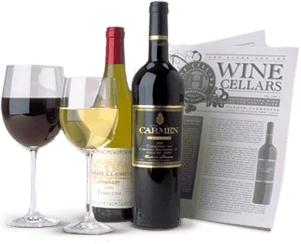The 2022 Château Saint-André Corbin Saint-Georges-Saint-Émilion is a distinguished right-bank Bordeaux blend, composed of 70% Merlot and 30% Cabernet Franc. This vintage showcases a deep crimson hue with dark purple highlights, indicating its concentration and depth. On the nose, it offers rich aromas of ripe blackberries, plums, and violets, complemented by notes of mocha, spice, and toasty oak. Subtle hints of licorice and vanilla add complexity to the bouquet. The palate is full-bodied and powerful, delivering layers of dark fruit flavors, including juicy plum and red currant, interwoven with sweet tobacco and a touch of singed cedar. The wine's structure is defined by firm, dusty tannins and a youthful acidity, contributing to its exceptional freshness and aging potential. This vintage has received critical acclaim, with James Suckling awarding it 92 points, describing it as "juicy, polished and refined with medium to full body and compact, chalky tannins." Overall, the 2022 Château Saint-André Corbin is a harmonious and elegant wine that reflects the unique terroir of Saint-Georges-Saint-Émilion. Its balance of ripe fruit, spice, and structured tannins makes it enjoyable now and promises further development with cellaring. Allow this charming red Bordeaux at least 30 minutes or more of aeration before serving cooled below room temperature (58°-62° F).
The 2022 Château Saint-André Corbin Saint-Georges-Saint-Émilion pairs beautifully with hearty and savory dishes that complement its rich fruit and structured tannins. Classic pairings include grilled lamb chops, duck breast with cherry glaze, or beef tenderloin with rosemary jus. The wine’s dark fruit and earthy notes also enhance mushroom risotto, roasted root vegetables, and lentil stews. For cheese lovers, aged Comté, Gouda, or a firm goat cheese can bring out its subtle spice and oak nuances. Its balance of power and elegance makes it a versatile companion for both refined dinners and rustic, comforting fare.
Château Saint-André Corbin is a historic wine estate situated in the Saint-Georges-Saint-Émilion appellation, a satellite of the renowned Saint-Émilion region in Bordeaux, France. The estate's origins trace back to the 4th century, with historical records indicating ownership by the Roman poet and statesman Ausonius. Archaeological excavations have unearthed significant artifacts, including statues now housed in the Louvre Museum in Paris, underscoring the estate's rich heritage.
Today, Château Saint-André Corbin is owned and managed by the Saby family, who have been vintners in the right bank of Bordeaux for nine generations. Brothers Jean-Philippe and Jean-Christophe Saby, both experienced oenologists and agricultural engineers, oversee the estate's operations, blending traditional and modern winemaking techniques to produce wines of exceptional quality.
The estate spans approximately 47 acres, with vineyards planted on clay-limestone soils that provide excellent drainage and water retention. The grape composition is predominantly Merlot (70%), complemented by Cabernet Franc (30%). The Cabernet Franc vines are original Bordeaux clones, averaging 70 years in age, contributing to the wine's complexity and depth.
In the cellar, vinification occurs in traditional cement vats, with pre-fermentation cold maceration and extended maceration periods to extract maximum fruit and concentration. The wines are aged for 12 months in French oak barrels from five different coopers, with one-third of the barrels renewed annually. Notably, the wines are neither filtered nor fined, preserving their natural character.
Château Saint-André Corbin's commitment to quality and its storied past make it a distinguished producer in the Saint-Georges-Saint-Émilion appellation, offering wines that reflect both the region's terroir and the estate's historical significance.
Saint-Émilion is Bordeaux’s most important wine town and the region’s hottest attraction. This walled, medieval village, perched atop a series of hills and surrounded by vines, is unquestionably the most beautiful wine village in all Bordeaux. Indeed, some would argue that it is the most beautiful wine village in all France. Nearly everything about Saint-Émilion is centered on wine; even the church is a cellar. And lest you think that Saint-Émilion has just recently succumbed to contemporary commercialism or sold itself to the modern mania for all that is Bacchanalian, rest assured that very little has changed in principle in this village since antiquity: Saint-Émilion was founded by the Romans, who used it as a viticultural bastion in the then burgeoning area known as Burdigala.
Interestingly, there are two distinct districts of Saint-Émilion, each possessing a special terroir. Both districts produce compelling red wines, but of a different sort. Typically, the côtes or hills upon the escarpment yield the fullest, slowest to mature wines of Saint-Émilion. Here the soil is nearly all limestone and the resulting wine is more apt to act like a great Cabernet-based wine of the Médoc. The other distinct district of Saint-Émilion lies on the plateau adjoining Pomerol, where the soil is comprised of sand and gravel. Here the wines tend to be fleshier and quicker to mature. Each style is authentic Saint-Émilion, which allows the savvy consumer double the pleasure. Add the satellite appellations of St.-Georges-St.-Émilion and Montagne-St.-Émilion, which command the hillsides just outside of the walls of St. Émilion with their distinctive terroirs, as well as Lussac and Puisseguin-St.-Émilion, and the two unique styles of St. Émilion further play out.
Merlot is the predominant grape of Saint-Émilion and the nearby satellite appellations. However, Cabernet Franc and to a lesser extent Cabernet Sauvignon play important supporting roles. However, Saint-Émilion can be produced from Merlot alone or from any combination or percentage of traditional red Bordeaux grape varieties. No commercial white wine is made in any Saint-Émilion appellation nor is it permitted to be sold as Saint-Émilion.

Enjoy Limited Production Estate
Bottled Wines
Discover limited production estate bottled wines such as Vergenoegd's internationally
acclaimed 2005 Cabernet Sauvignon, imported exclusively for our members.

